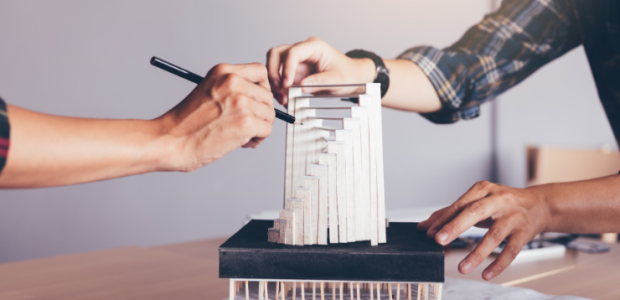
Dubai, the bustling metropolis in the heart of the United Arab Emirates, has emerged as a global icon of architectural innovation, economic growth, and urban development.
As its population continues to soar and urban expansion becomes a pressing need, traditional construction methods are facing challenges in meeting the demands for sustainable, affordable, and rapid housing solutions. This is where 3D printing technology has stepped in, promising to revolutionize the construction industry and address Dubai’s housing demands and urban expansion in unprecedented ways.
The Housing Challenge in Dubai
Dubai’s rapid economic growth and urbanization have led to a surge in population, creating a demand for new housing at an extraordinary pace. Traditional construction methods, which involve labor-intensive processes and significant material wastage, are struggling to keep up with this demand.
Additionally, Dubai’s scorching climate poses unique challenges in terms of energy efficiency and sustainable building practices. Therefore, a paradigm shift is essential to ensure that the city’s growth is both sustainable and meets the evolving needs of its inhabitants.
Enter 3D Printing
3D printing, also known as additive manufacturing, involves layering materials to create objects based on digital designs.
In construction, this technology involves using concrete-like materials to build structures layer by layer, allowing for a faster, more precise, and potentially more sustainable construction process. Dubai recognized the potential of 3D printing early on and embarked on a journey to integrate this technology into its urban development plans.
Advantages of 3D Printing in Dubai’s Housing Sector
1. Speed and Efficiency:
One of the most significant advantages of 3D printing Dubai in construction is its speed. Traditional construction methods often take months, if not years, to complete a single building. In contrast, 3D printing can significantly reduce the time required for construction. In a city like Dubai, where speed is essential to meet the ever-growing demand for housing, 3D printing offers a game-changing solution.
2. Cost-Effectiveness:
3D printing has the potential to reduce construction costs significantly. The automated nature of the process reduces the need for a large workforce, which can result in lower labor costs.
Additionally, the reduction in material wastage contributes to cost savings. For Dubai, where construction costs can be high due to the challenging climate and geographical conditions, cost-effectiveness is crucial in ensuring affordable housing solutions.
3. Customization and Design Freedom:
3D printing allows for intricate and complex architectural designs that were previously difficult to achieve using traditional methods.
This technology enables architects and designers to experiment with innovative shapes and structures, resulting in buildings that are not only functional but also aesthetically stunning. Dubai’s reputation for groundbreaking architecture aligns well with 3D printing’s potential to create iconic and unique structures that define the city’s skyline.
4. Sustainability:
Sustainability is a core concern in Dubai’s urban development strategy. 3D printing offers the potential to reduce material wastage and energy consumption compared to conventional construction methods.
Additionally, by utilizing locally sourced materials and optimizing designs for energy efficiency, 3D printed buildings can align with Dubai’s sustainability goals. The reduction in construction waste is also crucial for a city that places a premium on resource efficiency.
5. Rapid Urban Expansion:
Dubai’s ambitious urban expansion plans require a construction approach that can keep up with the pace of growth.
3D printing technology, with its ability to rapidly construct buildings, is well-suited to support the city’s expansion while maintaining the quality and efficiency of construction projects. This can play a pivotal role in ensuring that infrastructure keeps pace with the increasing population and economic activity.
Challenges and Considerations
While the potential benefits of 3D printing in addressing Dubai’s, housing demands and urban expansion are substantial, several challenges and considerations need to be addressed:
1. Regulatory Framework:
The integration of 3D printing technology into the construction sector requires the development of appropriate regulations and standards. Dubai’s authorities need to work closely with industry stakeholders to ensure that safety, quality, and compliance are upheld in 3D printed buildings.
2. Technological Advancements:
Continuous research and development are necessary to enhance the capabilities of 3D printing technology in construction. This includes improving the range of printable materials, refining the printing processes, and developing reliable automation systems to ensure consistent quality.
3. Skilled Workforce:
While 3D printing reduces the demand for manual labor in construction, it requires a skilled workforce to operate and maintain the printers, troubleshoot technical issues, and oversee the entire process. Training programs and educational initiatives are essential to ensure a skilled talent pool.
4. Public Perception and Acceptance:
Introducing a revolutionary technology like 3D printing can be met with skepticism from the public. Effective communication about the benefits, safety, and reliability of 3D printed buildings is crucial to gain public acceptance and trust.
Conclusion
Dubai’s relentless pursuit of innovation and excellence has paved the way for 3D printing technology to play a pivotal role in addressing the city’s housing demands and urban expansion. The synergy between Dubai’s aspirations for iconic architecture, sustainability, and rapid development aligns perfectly with the capabilities of 3D printing.
By embracing this technology, Dubai has the opportunity to redefine the construction industry, set new global standards for urban development, and provide its citizens with efficient, sustainable, and futuristic housing solutions.
The journey towards integrating 3D printing into Dubai’s urban fabric is not without challenges, but the potential rewards are monumental, positioning the city at the forefront of a construction revolution.
